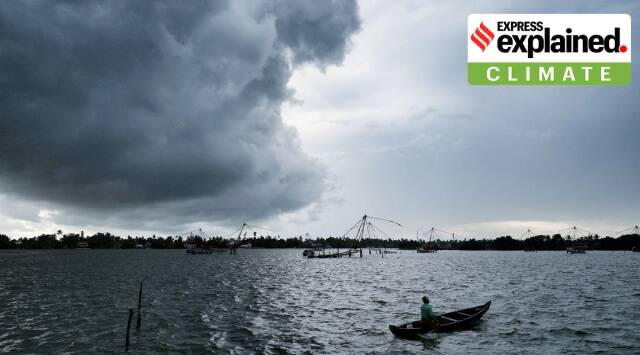Description

Disclaimer: Copyright infringement not intended.
Context: The return of El Niño in the Pacific Ocean, as announced by the National Oceanic and Atmospheric Administration (NOAA) of the United States.
Details
- El Niño is a climate pattern that occurs in the equatorial Pacific Ocean every 2 to 7 years.
- It is characterized by unusual warming of surface waters along the central and east-central Pacific Ocean.
Mechanism and Causes of El Niño:
- El Niño is a result of the El Niño Southern Oscillation (ENSO) climate cycle.
- During El Niño, trade winds weaken or reverse, causing warm water to move into the central and eastern equatorial Pacific Ocean.
Global Impacts of El Niño:
- El Niño is associated with severe heat waves, floods, and droughts worldwide.
- It increases the risk of heavy rainfall and droughts in different regions.
Severity of the 2023 El Niño Conditions:
- The 2023 El Niño event is the fifth since 2000, occurring approximately every 4-5 years.
- Sea surface temperatures in the equatorial Pacific Ocean have been rapidly warming, surpassing predictions.
- The Niño 3.4 index, a vital indicator of El Niño, crossed the threshold value of 0.5 degrees Celsius.
Impact on Indian Monsoon Season:
- In India, there is a correlation between El Niño events and poor rainfall.
- Over the last hundred years, 13 out of 18 drought years in India were associated with El Niño.
- The frequency of El Niño events has been increasing over time, with 15 occurrences from 1951-2021.
Concerns for India:
- The 2023 El Niño event may affect the monsoon season in India.
- Rapid warming following three years of La Niña is unusual and could disrupt rainfall patterns.
- Climate change can exacerbate certain impacts of El Niño, leading to new temperature records.
Historical Data:
- Between 1900 and 1950, there were 7 El Niño years in India.
- From 1951-2021, there were 15 El Niño years, indicating an increasing frequency of El Niño events.
- Nine out of the 15 El Niño years during 1951-2021 recorded deficient monsoon rains.
Expert Insights:
- NOAA scientists highlight the potential impact of climate change on El Niño and associated phenomena.
- Climate change could lead to new temperature records, particularly in regions already experiencing above-average temperatures.
|
PRACTICE QUESTION
Q) El Niño, a climate phenomenon with global implications, has been a cause of concern for various countries, including India. Discuss the causes and impacts of El Niño, and examine its correlation with rainfall patterns in India. Also, analyze the role of climate change in exacerbating or mitigating the effects of El Niño. (250 words)
|

https://indianexpress.com/article/explained/explained-climate/el-nino-noaa-warming-pacific-ocean-meaning-explained-8653916/
















